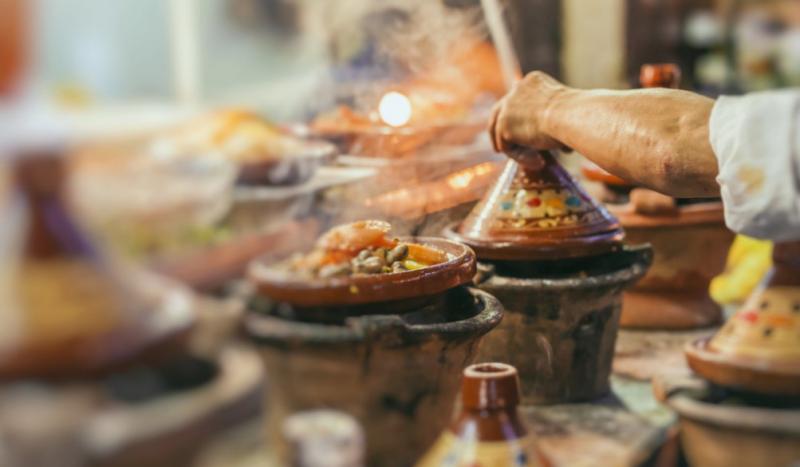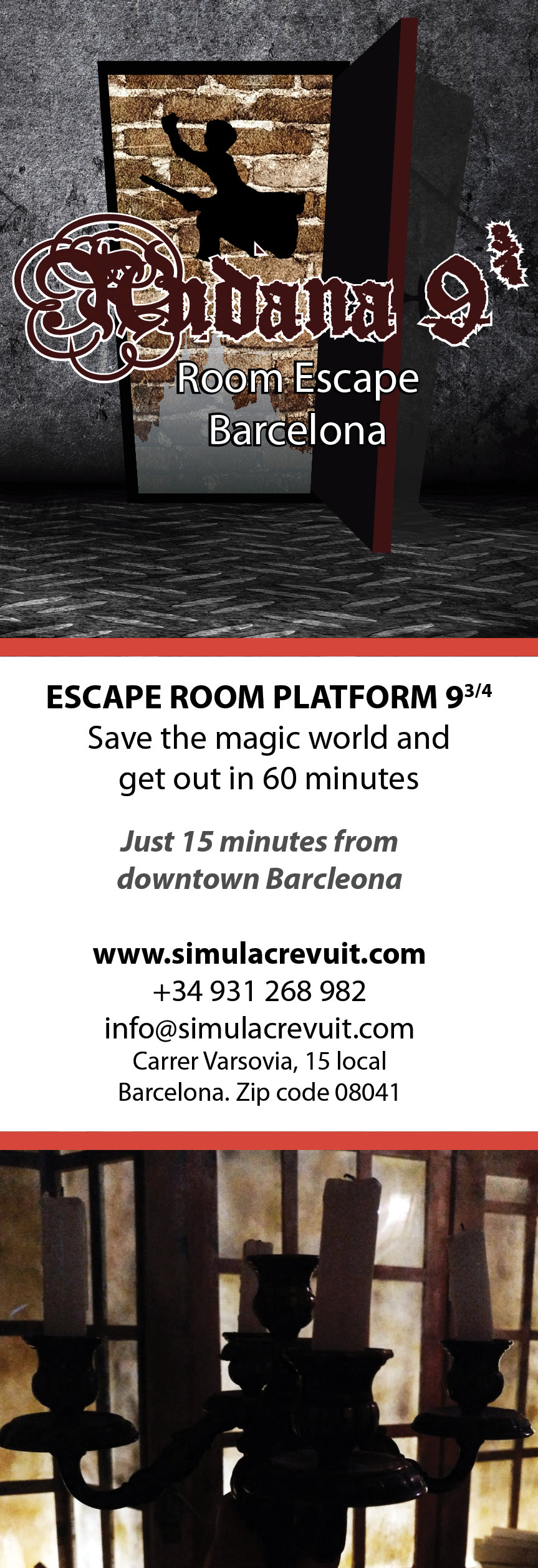
Marrakesh, Morocco - A Foodie’s Checklist
Moroccan cuisine is a mouthwatering mix of Arabic, Andalusian, Berber and Mediterranean cultures that fuse tremendously together to produce dishes that excite and delight the taste buds, and where better to appreciate all of this than in the charming city of Marrakesh. In addition to having the astounding Atlas Mountains as the backdrop to its captivating skyline, the city is surrounded by lemon, orange and olive groves which ensures that food here is rich and flavoursome. Snake charmers on one corner and the aroma of fragrant spices on the other, Marrakesh is as much of a foodie’s paradise as it is a culture vulture’s haven with curious culinary traditions, enigmatic chefs and friendly locals inviting all those with a taste of adventure to sample some of its finest offerings. From sheep’s head to snails, plush restaurants to historic squares and making sure you know your tagine from your tanjia, we’ve created a thorough checklist of all things food to satisfy your soul as well as stomach.
Tagine
It would be almost impossible to go on a trip to Morocco without tucking into a tantalising tagine. The name tagine refers to the clay pot this salacious stew is cooked in, rather than the dish itself. For those of you not already familiar with the cooking method, meats, vegetables and spices are put into a conical clay pot and left to simmer over hot coals for hours to produce a beautiful blend of savoury and sweet flavourings. While the tagine can be prepared with different meats and vegetables, lamb is amongst the most popular meat used and the dish is typically seasoned with ginger, cumin, turmeric, cinnamon and saffron. Not just delicious, tagine’s are a practical way of cooking in areas where there are limited water supplies as the shape of the pot means that steam is trapped and turned back into a liquid, meaning that it can be made using minimal water.
Tanjia
Not to be confused with tagine, tanjia is a meat heavy dish native to Marrakesh. Similar to tagine, this fragrant dish takes its name from the clay urn it is cooked in. Whereas tagine is often made with a variety of different ingredient combinations, tanjia is a little more specific and is typically concocted using meat flavoured with lemons, garlic, cumin, saffron and olive oil. It is easy to make and is traditionally prepared by men, even being known as the ‘bachelor’s dish’. The origins of tanjia relate to old habitats of life in Marrakesh where the men who worked in the souks would enjoy the Fridays they had off by having a picnic in the park with friends and sharing this easy-to-make yet sublime meal. Embrace tradition and rent a tanjia from the butcher and enjoy this succulent dish in one of Marrakesh’s gorgeous gardens with friends.
Couscous
Whether you have it as an accompaniment to a tasty tagine or on its own, a visit to Marrakesh – or anywhere else in Morocco for that matter – will inevitably involve tucking into couscous in some form of another. You can even go as far as declaring couscous, or seksu in the local lingo, as the national dish of Morocco. A staple in a Moroccan diet, couscous is typically served underneath a meat or vegetable dish but can also be served on its own and is usually topped with aubergines, courgettes, carrots and pumpkins. Step into any of Marrakesh’s eateries and you won’t find the instant couscous you may be familiar with back home. Instead, preparing it is a process that takes several hours as the flavours marvellously marinade together. It is typically eaten on a Friday or as celebratory meal at weddings and other special occasions.
Sheep’s Head
When travelling to another country it is always best to go with an open mind – especially when met with the sight of something as unusual as sheep’s head sold at local market stalls! Even though they may not look like the most appetising of dishes, sheep’s head is a Middle Eastern delicacy that certainly shouldn’t be knocked until you’ve tried it. Head to the souks at lunchtime when the heads have usually been steamed for several hours and make like a local and ditch the utensils to enjoy with just a piece of bread. Believe it or not you can actually eat the whole of the head but the tastiest and most tender parts are the cheek meat and tongue. And for those of you with more adventurous taste buds and a desire for the whole sheep head experience, it is worth noting that the brains are often sold at separate stalls.
Snails
It’s not just the French that claim fame to this molluscan offering, with snails being as common as babouche slippers on the streets of Marrakesh. Despite snail soup not being as conventional as chicken soup, it is certainly worth picking up a bowl of the stuff. They are typically served in a peppery broth known as babbouche, and the snails are often flavoured with up to 15 different spices. Locals believe that the broth has several health benefits and is good for digestion and fever, which is why you may catch some people just drinking the broth and not the snails, although we feel you’ll be missing out on the authentic flavours of Morocco if you do so. To truly master the art of eating this delicacy, use a tooth pick to slurp the snail from their tiny shells and then drink the soup.
Sardines
Morocco is the largest exporter of sardines in the world, so it would be rude not to tuck into these small fishes when paying a visit to Marrakesh. However, don’t limit yourself to thinking that the best way to enjoy sardines is from the tinned cans in which they are typically exported as they are often infused with local spices and served in a range of delicious ways. Sardines constitute an important part of the sensational street food scene in Marrakesh and when ambling the winding streets of this fabulous city and losing yourself amongst the stalls of historic squares, make sure you try some fried stuffed sardines or why not refuel with a sardine sandwich. Forget Italian meatballs and instead sink your teeth into Moroccan sardine balls that are coated in a spicy tomato sauce for a taste explosion to remember.
Jemaa el-Fnaa
The heart and soul of Marrakesh, visiting the famous square is a multisensory experience where before even tasting anything you’ll already be intoxicated by the aromas of freshly cooked cuisine. Listen to enigmatic vendors enticing passers-by with their offerings and pick up all kinds of scrumptious street food in addition to picking up other essentials such as olives, nuts and spices. The chaotic buzz of the marketplace can often be overwhelming, but luckily there are plentiful opportunities to embark on food tasting tours of the square with local guides. You can of course navigate the stalls on your own and let the smell of sizzling street food guide you. For a fantastic photo opportunity, look out for stalls selling brochettes, a Moroccan type of kebab that is rubbed in salt and spices before being smoked.
Le Restaurant at La Maison Arabe
For an exquisite and unique dining experience like no other, you need look no further than Le Restaurant at La Maison Arabe. Situated within a plush five-star boutique hotel, the restaurant welcomes both hotel guests and visitors alike with its promise of escaping into a world of indulgent cuisine and lavish furnishings. Established in 1947, it has a strong tradition of serving quality food and has entertained the likes of Winston Churchill and Jackie Kennedy over the years. The restaurant’s décor exudes an elegant Moroccan design, which is wonderfully complemented with a menu that delivers a carefully curated selection of authentic Moroccan food as well as international favourites. Diners can also enjoy the gentle arab-andalusian music in the background, and for those who long to master the divine secrets of Moroccan cuisine, they can opt to take part in one of the hotel’s exceptional cooking workshops.
Moroccan Mint Tea
It is not only the British that are renowned for their tea drinking culture and anyone who knows anything about Morocco will be well aware of how integral mint tea is to everyday life. Known as ‘Moroccan Whisky’ their mint tea is no supermarket-bought box of tea bags that you just add water to, rather it is a green tea with spearmint leaves and sugar, ideal for those of you with a sweet tooth. There is no ‘optimum’ time to have mint tea and it is consumed at all hours of the day; have it as an accompanying drink to your main meal, a soothing drink after a relaxing hammam treatment or head to one of Marrakesh’s many rooftops and sip on a refreshing glass of mint tea and watch the sun set over the Atlas Mountains that provide a breathtaking backdrop to the Marrakesh cityscape.
Pastries
If the Moroccan mint tea wasn’t sweet enough then make sure you pick up one of the many assortments of pastries on offer throughout the city. Morocco is famous for its sweet treats and delectable deserts that are prefect for your palette, particularly after something spicier. Typical ingredients in the most popular pastries include almonds, dates, rose water and orange blossom water. Briouat is a deep fried pastry that is sweetened with honey and filled with almonds – imagine an almond spring roll, whilst gazelle horns, as the name implies, are shaped like the horn of a gazelle and filled with almonds and cinnamon wrapped in a sweet pastry. After trawling through the famous Jemaa el-Fnaa square, be sure to stop at the Patisserie des Princes and try one of their scrumptious Moroccan or French pastries that will have you drooling and longing for more.
Share this article:



















